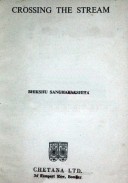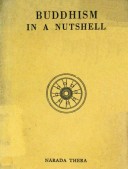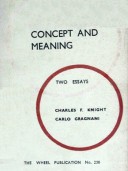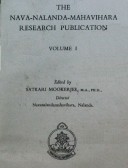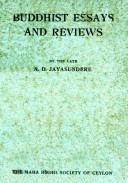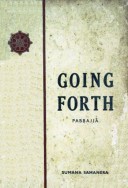Tìm Sách
Sách tiếng Anh-English >> Living Zen
Thông tin tra cứu
- Tên sách : Living Zen
- Tác giả : Robert Linssen
- Dịch giả : Diana Abrahams-Curtel
- Ngôn ngữ : Anh
- Số trang : 348
- Nhà xuất bản : The Macmillan Company New York
- Năm xuất bản : 1954
- Phân loại : Sách tiếng Anh-English
- MCB : 12010000004011
- OPAC :
- Tóm tắt :
Living Zen
Robert Linssen
Translated by Diana Abrahams-Curtel
New York
The Macmillan Company
Preface
Western interest in Zen Buddhism is steadily rising, and the ferment introduced by Dr. D. T. Suzuki is beginning to take effect and to appear in visible reaction. For long we have depended on his vast and deeply illumined mind to give us, to the extent that books can ever convey it, that vision of Non-Duality which only the few attain. But if the Zen technique is a true way to Reality it can be and must be adapted to the needs of the Western mind. To what extent the more famous ‘devices’ used by the Zen Masters remains to be seen; much will depend on the speed with which a few minds, albeit in Western bodies, can reach the very high standard required of a Japanese Zen roshi, or qualified Zen teacher.
Meanwhile we are producing our own writers, those who, after a long or short intellectual study of Zen, have acquired enough ‘experience’ to think that they have something, useful to say to their fellow students. I understand that the late Eugen Herrigel’s Zen in the Art of Archery is in the opinion of Zen experts in Japan the best such work so far produced, but new minds are publishing their ‘findings’month by month, and between them they may be producing the beginnings of a Western approach to Zen. All of them approach the subject via the intellect; it may be that for the West there is no other way, but in every case the intellect is illumined by a high degree of intuition or ‘direct seeing’, and the higher that thought can life us the easier it may be to take the ‘leap ‘which alone will land us beyond the dualism of even the highest thought...
Contents
Preface by Christmas Humphreys
Foreword by Dr. R. Godel
Preface to the second (French) edition
Introductory note
Part one
I, Summary history of Buddhism
II. Short historical sketch of Zen
III. Is Buddhism a philosophy?
IV. Is Buddhism a religion?
V. The notion of God in Buddhism
VI. The Illusory character of aid, of salvation, of all systems
VII. The nature of things
VIII. Complementarily of physics and Psychology
IX. The force of habit
X. the action of the force of habit on the mind according to Psychological types
XI. Memory-habits and the birth of the ‘I-process’
XII. Tanka, or the thirst for becoming
XIII. Obedience to the nature of things
XIV. Nirvana or satori
XV. Nirvana and the void
XVI. Nirvana, Satori and Lucid love
XVII. Lucidity without ideation
XVIII. Nirvana, Satori and the present
XIX. Satori and the Zen unconscious
XX. Characteristics of Satori according to the Zen masters
XXI. Zen Buddhism and everyday life
XXII. The inadequacies
XXIII. Buddhism and social problems
XXIV. Buddhism and Christianity
XXV. Similarities between Zen and Krishnamurti
XXVI. Divergences between Buddhism, Zen and Krishnamurti
NoteI.Commentary on a ‘Koan’
Note II. Brief survey of the Tibetan schools of philosophy, of the ‘Oral transmission’, of the (so-called) ‘secret doctrines’, by Madame A. David-Neel
Part two
Introduction to the conclusions
I. Transformation of physical life and its relations with the Psycho-Physical unity
II. Transformation of human relations
III. The true ‘Letting-go ‘effected by ‘love-intelligence’
Note I On the birth of thoughts
Note II Satori and the research techniques of physicists
Note III From personal consciousness to the state of Satori
Note IV Parable of the flame and the smoke
Marginal notes
Index
 Facebook
Facebook
 Google
Google
 Google+
Google+


